Scenario 1
SPSS Output
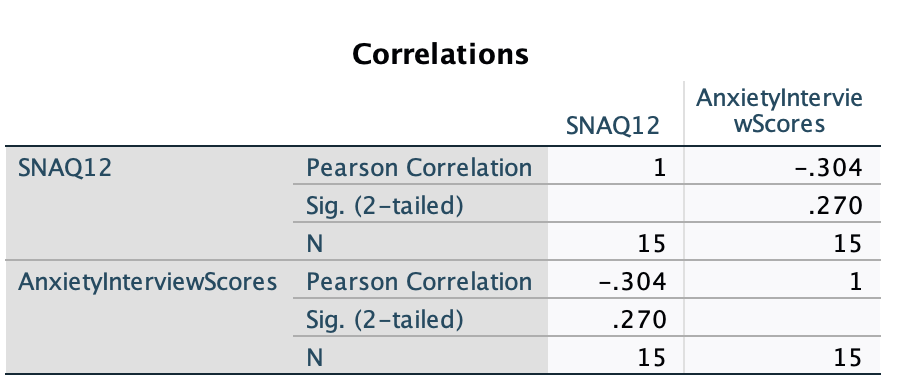
Results
The purpose of the present correlation analysis was to identify the nature of the relationship between respondents’ perceptions of generalized anxiety that may have been experienced and scores on the SNAQ-12 scale assessing snake phobia. The results showed that the overall correlation between the variables were insignificant at an alpha of.05, and thus the Pearson correlation coefficient could be explained by any numerical overlap between the data in the sample, r(13) = -.304, p =.270. Increasing the sample size, entailing an increase in statistical power, could allow the significance of the correlation to be detected, if observed at all. Figure 1 shows the scatter plot for the data: we can clearly see that no observable trend in the distribution is apparent. In other words, one cannot even approximate how the SNAQ-12 scores change as the generalized anxiety interview scores increase. As a general corollary, it can be concluded that no significant correlation was observed between snake phobia and generalized anxiety.
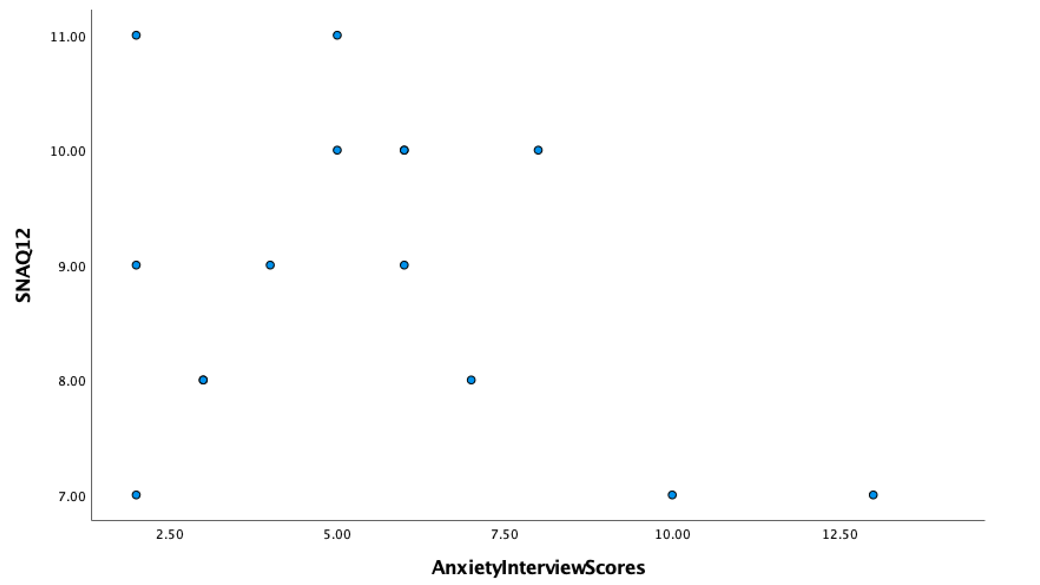
Scenario 2
SPSS Output
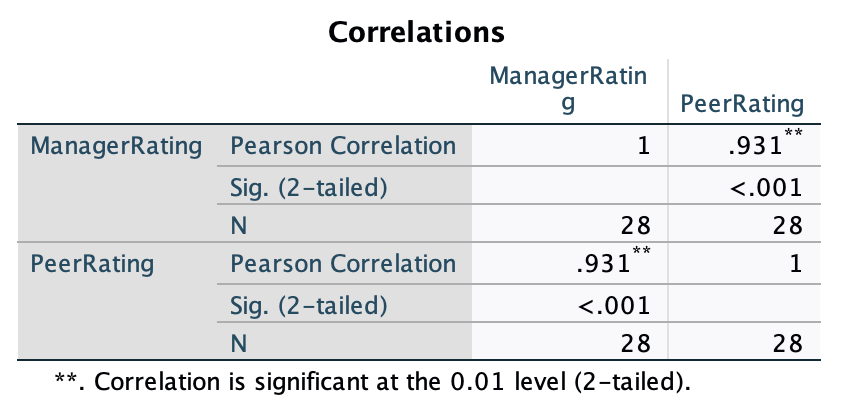
Results
The purpose of this statistical analysis was to evaluate the strength and direction of the relationship between two variables in an organizational study. The variables are the rating of employees’ leadership potential as assessed by peers and managers. Thus, the purpose of the analysis is to look for a potential relationship between how management and peers rate employees, if such a relationship exists. The results show that there is a significant correlation between grades from peers and grades from managers, r(26) =.931, p <.001. The Pearson correlation coefficient indicates a strong positive relationship between these variables, meaning that when grades from managers increased, there was a simultaneous increase in grades from peers and vice versa. The scatter plot shown in Figure 2 for the sample confirms this relationship based on an upward trend. Thus, in the context of organizational research, it is true to conclude that there was a significant positive relationship between employee leadership potential evaluations from peers and from managers.
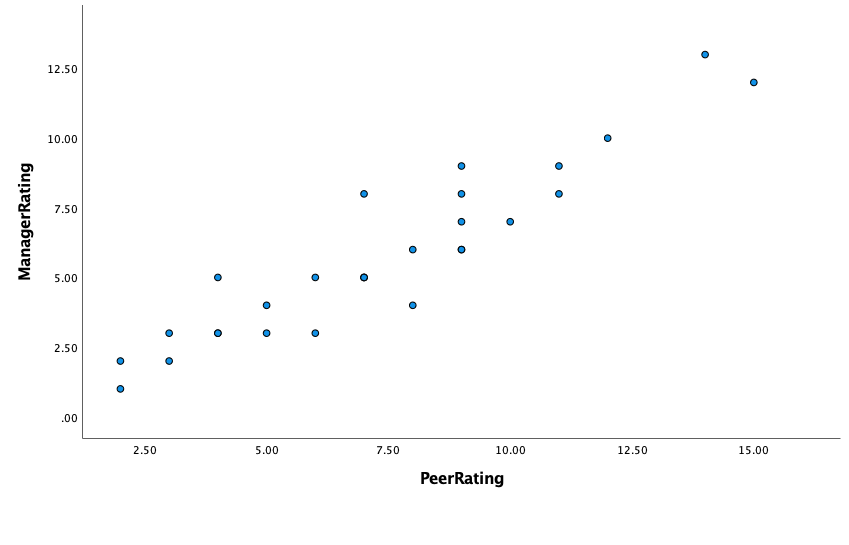
Scenario 3
SPSS Output
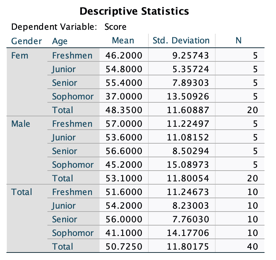
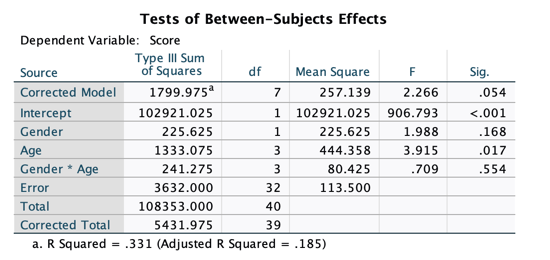

Results
As part of this part of the statistical analysis, it was necessary to determine the existence of a potential relationship between year of study and age as independent factors, and perceptions of campus safety. Four cohorts for each of the two gender categories were assembled: each cohort had five participants who rated their own sense of safety on a 70-point scale (1 to 70): 40 respondents in total. A higher score corresponded to a perception of increased feelings of safety, while a lower score indicated the opposite. To simultaneously compare such safety across gender and age characteristics, it was necessary to use a two-factor ANOVA analysis to compare averages across cohorts (Bevans, 2022). The test results demonstrated that only the variable of age, that is, student affiliation with a particular year of study, was a significant predictor of differences in feelings of safety, F(3, 32) = 3.915, p =.017. This implies that students of different years of study differentially felt safe, but that this perception was not associated with gender identity. The a posteriori Tukey test used to find the location of such differences demonstrated that significant differences in perception existed between Junior and Sophomore, and between Sophomore and Senior: in both cases, Sophomores felt the least safe on campus, as Figure 3 suggests.
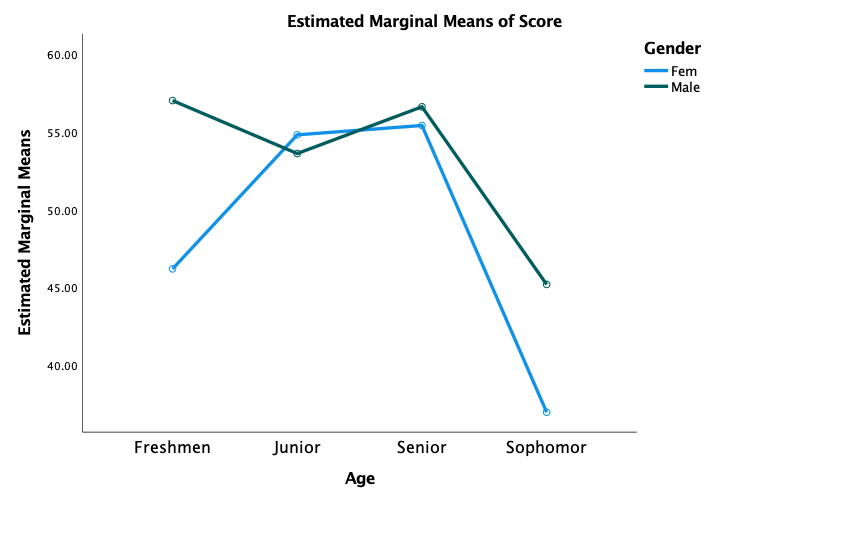
Reference
Bevans, R. (2022). Two-way ANOVA | examples & when to use it. Scribbr. Web.